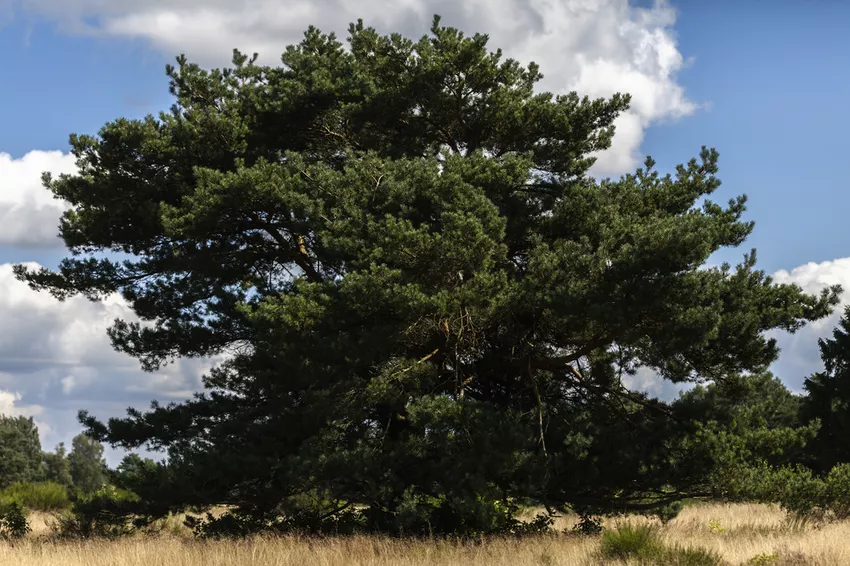- General
- growth and appearance
- Happen
- demands on the environment
- economic use
- pests
- Suitable companion plants
Pine trees come in many different species. The Scots pine is a special variety. Would you like to find out more about its characteristics, location and soil requirements or growth habit? Then you are exactly right here. The following profile brings you closer to the characteristics of the Scots pine.
 The Scots pine can grow up to 40m high
The Scots pine can grow up to 40m high
General
- German name: Scots pine
- Synonyms: Scots pine, red pine, Forche, white pine
- Latin name: Pinus silvestres
- Tree species: evergreen conifer
- Life expectancy: over 500 years
- Gender: unisexual, monoecious
- Type of pollination: wind pollination, cross-pollination
growth and appearance
height and shape
- Growth height: 20-40 m
- Shape: crooked, small crown, crown overhangs on one side
needles
- hard
- up to 7 cm long
cones
- Colour: Green when unripe, then brown
- Quantity: up to 1,600 pieces per jaw
- both male and female cones on a tree
- Species: seed cones (slightly larger, female), pollen cones (slightly smaller, male)
- only open when dry
bark
- deep furrows
- rough slabs
- resistant to fire
Happen
- everywhere in Europe
- often artificially planted in Germany
- grows even in uneconomical areas under extreme conditions
- with a share of 24% the most common conifer in Germany
- also the most common of all pine species in Germany
demands on the environment
need for light
- needs a lot of light
- the pine dies as an undergrowth
- but also grows in the forest
soil condition
- very low demands
- not too wet
- forms its own hummus
- also grows in bogs
- frequent symbioses with fungi on poor soils
- preferably sandy or loamy soils
- optimum pH value: strongly acidic or strongly alkaline
temperature
- prefers warm locations
- Frost hardness: - 36°C
economic use
- Lumber
- Furniture
- toy
- flooring
- in the fiber and pulp industry
- for energy production
- Wood is rather soft and elastic and easy to work with
- However, wood is not weatherproof
pests
- Pine Owl
- jaw span
- pine moth
- weevil
- Red deer or roe deer (bark injuries caused by sweeping or feeding)
Suitable companion plants
- Oak
- beech
- hornbeam
- douglas fir
- larch